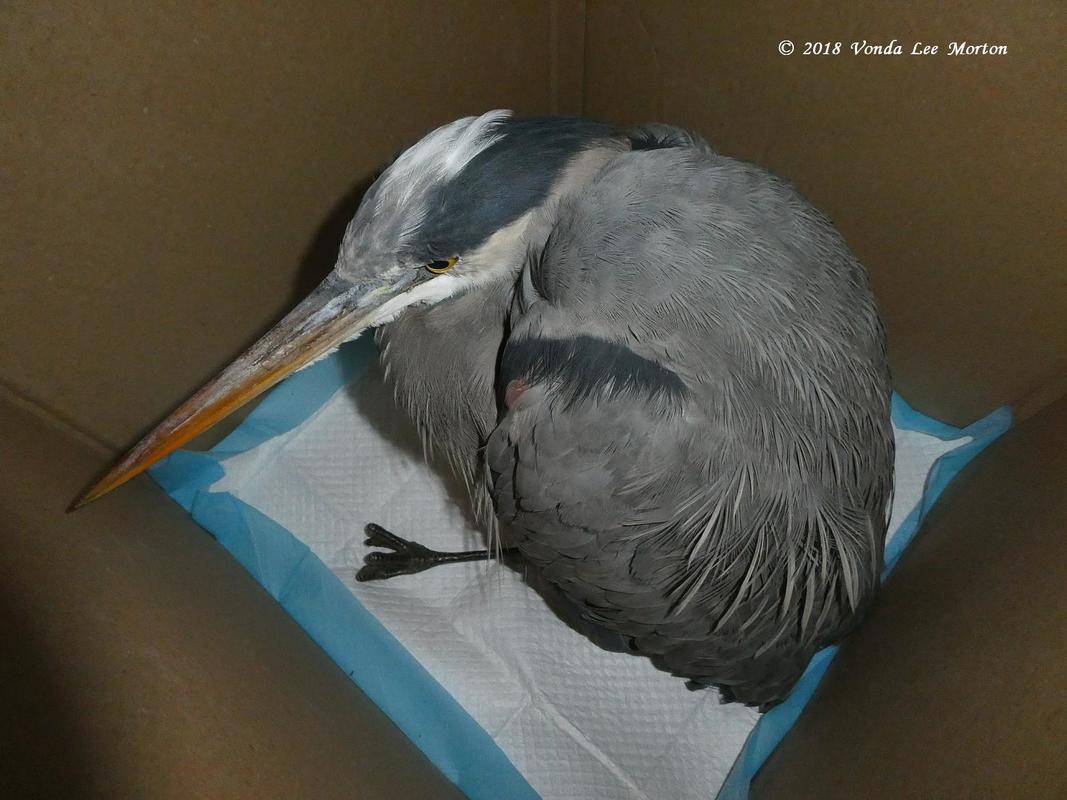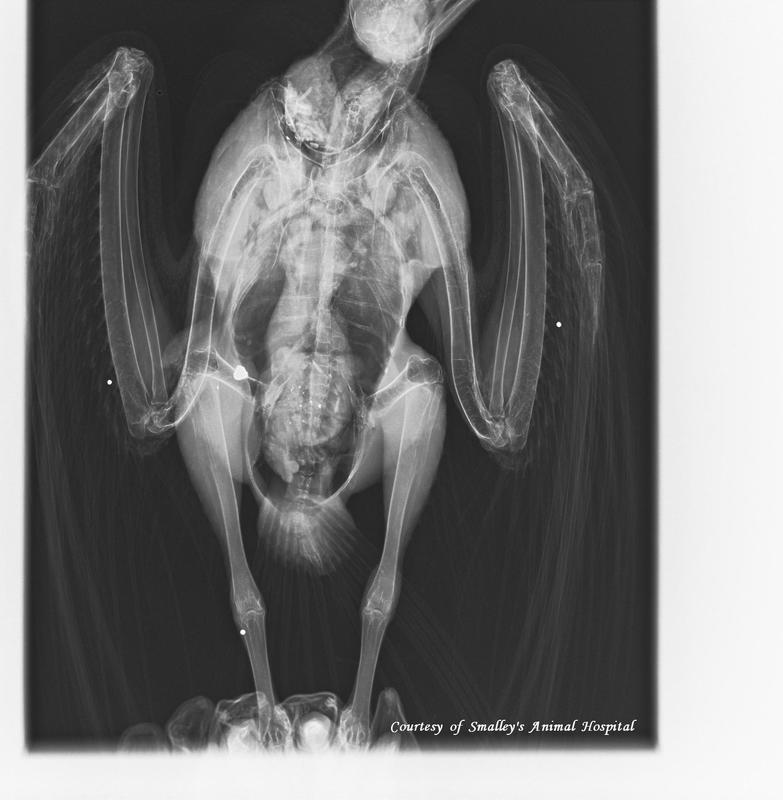The great blue heron that was en route last week exhibited neurological symptoms upon arrival, perhaps from lead poisoning or maybe rodenticide. We’ll never know, as the poor bird died overnight, and the one source of necropsies in the state doesn’t provide even one measly free annual necropsy to rehabbers—and quite frankly, I can’t justify the expense of a necropsy to satisfy my own curiosity. That’s money taken from feeding live birds, so the better option seems to me to be to focus on the living. They can be helped; the dead can’t.
…And when I opened the cataract barred’s box, he was stone cold. In the 30 minutes it took me to drive home, pick up the other two birds and drive to the release site, he’d died. NOT the outcome any of us expected but internal soft tissue injuries, like a slow bleed, don’t show on x-rays, so it’s not the first time I’ve had a bird die after x-rays showed nothing—and it won’t be the last. It ain’t pleasant but it’s the harsh reality of wildlife rehab.
Friday a gorgeous first-year male red-tail came in with a left wing fracture, but it’s kinda odd. His wing droops from the shoulder but the fracture feels like it’s in the wrist—and he has a bloody scrape on the back of that wing close to the elbow. Gonna definitely take x-rays to figure this one out!
And the flyers had to be moved to new digs last week, as they finally succeeded in busting out the side of their old pen with their nocturnal shenanigans, resulting in three escapees. It took two nights to reunite the entire group!























 RSS Feed
RSS Feed
